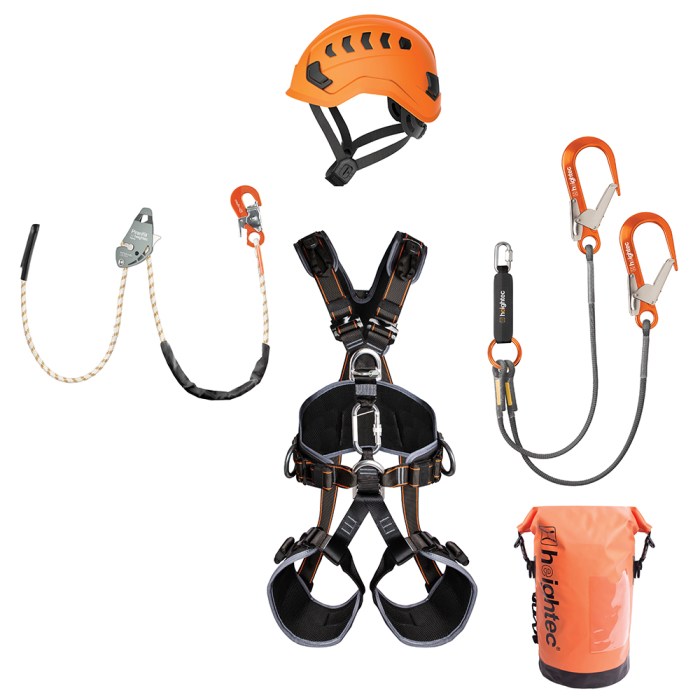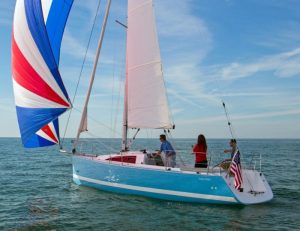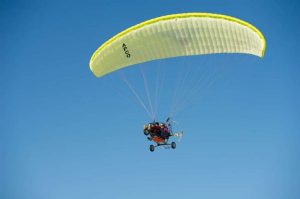
Kicking off with Best climbing gear for travel, get ready to explore the world of lightweight essentials and clever packing strategies that will elevate your climbing adventures to new heights!
Whether you’re a seasoned climber or just starting out, having the right gear can make all the difference when you’re on the go. Let’s dive in and discover the must-haves for your next climbing expedition.
Best Climbing Gear for Travel
When it comes to climbing gear for travel, lightweight and compact items are essential to ensure ease of transportation and convenience during your climbing adventures. Packing efficiently is crucial to make the most out of your climbing trips. Let’s explore the importance of lightweight climbing gear, essential items to pack, and tips on efficient packing for travel.
Importance of Lightweight Climbing Gear
Having lightweight climbing gear is crucial for travel as it allows you to carry your equipment with ease, whether you’re hiking to the climbing spot or traveling long distances. Heavy gear can be a burden and may limit your mobility during your climbing expeditions. Opting for lightweight gear ensures that you can move freely and comfortably, enhancing your overall climbing experience.
Essential Climbing Gear Items for Travel
- Climbing shoes: Choose a pair of comfortable and durable climbing shoes that fit well for various climbing terrains.
- Climbing harness: Invest in a lightweight harness that provides safety and comfort during your climbs.
- Chalk bag and chalk: Keep your hands dry and enhance your grip with a chalk bag and chalk for better performance.
- Climbing rope: Pack a durable and lightweight climbing rope suitable for the routes you plan to conquer.
- Climbing helmet: Protect yourself from potential falls or rock debris by wearing a sturdy climbing helmet.
Tips for Efficiently Packing Climbing Gear
When packing your climbing gear for travel, consider the following tips to maximize space and ensure that you have everything you need:
- Use packing cubes or compression sacks to organize and compress your gear, making it easier to fit in your backpack or luggage.
- Roll your clothing items to save space and create more room for your climbing gear.
- Utilize the space inside your climbing shoes by stuffing small items like socks or chalk balls inside them.
- Invest in a compact and lightweight backpack specifically designed for carrying climbing gear to keep everything organized and easily accessible.
Cycling & Bikepacking Travel
When it comes to traveling on two wheels, there are two main options to consider: cycling and bikepacking. While both involve traveling by bike, they each require different gear and present unique challenges. Let’s compare the essential gear needed for cycling versus bikepacking travel and discuss tips for choosing the best bike for long-distance travel.
Essential Gear for Cycling vs. Bikepacking
- Cycling: When cycling, you typically need a road or hybrid bike, a helmet, cycling shorts, a water bottle, repair kit, and cycling shoes. The focus is on speed and efficiency, so you’ll want to keep your gear lightweight.
- Bikepacking: In contrast, bikepacking involves carrying all your gear on your bike for overnight trips. You’ll need a bikepacking-specific bike or a mountain bike with racks and panniers, a tent, sleeping bag, cooking equipment, and extra clothes. The gear is heavier but allows for self-sufficient travel.
Transporting Cycling Gear during Travel
- When traveling with cycling gear, the main challenge is ensuring all your equipment is securely packed and protected. Consider using a bike bag or box for air travel and investing in a sturdy bike rack for road trips.
- For bikepacking, you’ll need to carefully distribute weight on your bike to maintain balance and stability. Waterproof bags and compression straps can help keep your gear secure and organized.
Tips for Choosing the Best Bike for Long-Distance Travel
- Consider the terrain you’ll be riding on: If you’ll encounter rough trails or gravel roads, opt for a mountain bike or gravel bike. For smooth roads and long distances, a road bike might be more suitable.
- Look for a bike with mounting points for racks and panniers if you plan on bikepacking. This will allow you to carry all your gear efficiently and comfortably.
- Test ride different bikes to find one that fits you well and feels comfortable for long rides. Comfort is key when embarking on a long-distance cycling journey.
Road Trips & Van Life Travel
Road trips and van life adventures offer unique opportunities for exploration and freedom on the open road. To make the most of these experiences, having the right gear is essential. From comfort and convenience to safety, here are some must-have items for road trips and van life travel.
Must-Have Gear for Road Trips
- Comfortable seating and cushions to reduce fatigue during long drives.
- Portable cooler or mini fridge to keep drinks and snacks fresh on the go.
- Inverter to charge electronic devices and appliances while driving.
- Sunshade or window covers to protect against intense sunlight and maintain privacy.
Space-Saving Storage Solutions for Van Life Travel
- Collapsible storage bins and organizers to maximize space in a compact van interior.
- Hanging organizers or hooks to keep items off the floor and easily accessible.
- Vacuum-sealed bags for clothing and bedding to minimize bulk and optimize storage space.
- Roof racks or cargo carriers for bulky gear like bikes, kayaks, or camping equipment.
Importance of Safety Gear for Road Trips and Van Life Adventures
- First aid kit with essential supplies for minor injuries or emergencies on the road.
- Emergency roadside kit with tools, jumper cables, and a flashlight for unexpected breakdowns.
- Fire extinguisher and smoke detector for fire safety in the confined space of a van.
- GPS navigation system or maps to stay on course and find help in unfamiliar areas.
Rock Climbing Travel
When it comes to rock climbing travel, whether indoor or outdoor, having the right gear is essential to ensure safety and success on your climbing adventures. Let’s compare the gear requirements for indoor climbing versus outdoor rock climbing travel and discuss the specific gear needed for climbing in different terrains during travel, as well as the importance of quality climbing shoes.
Indoor Climbing vs. Outdoor Rock Climbing Travel
- Indoor Climbing:
- Comfortable clothing
- Climbing shoes
- Chalk bag
- Belay device
- Climbing harness
- Outdoor Rock Climbing:
- Helmet
- Rope
- Quickdraws
- Nuts and cams for trad climbing
- Climbing shoes
Gear Needed for Climbing in Different Terrains
- Mountain Climbing:
- Harness
- Crampons
- Ice axe
- Hiking boots
- Desert Climbing:
- Sun protection gear
- Hydration pack
- Sand-resistant shoes
- Gloves
- Forest Climbing:
- Bug spray
- Tree-friendly climbing gear
- Helmet for falling branches
- Rope protector
Importance of Quality Climbing Shoes
Quality climbing shoes are crucial for rock climbing travel as they provide the necessary grip and support needed to navigate various terrains and surfaces. Ill-fitting or low-quality shoes can lead to discomfort, increased risk of injury, and hindered performance. Investing in a pair of durable and well-fitted climbing shoes is essential for a successful and enjoyable climbing experience on your travels.
Extreme Sports Travel
When it comes to extreme sports travel, it’s important to consider the crossover of gear between different activities. Whether you’re into skydiving, bungee jumping, or other adrenaline-pumping adventures, having the right gear can make all the difference in ensuring a safe and enjoyable experience. Let’s explore the specialized gear requirements for these extreme sports and how to choose versatile gear suitable for various activities during travel.
Crossover Gear for Extreme Sports
When packing for extreme sports travel, it’s essential to choose gear that can serve multiple purposes across different activities. Look for items like durable backpacks, versatile clothing that can withstand various weather conditions, and sturdy footwear that offers both comfort and protection. Investing in high-quality gear that is lightweight and compact can help you save space and weight in your travel bag while ensuring you’re prepared for any adventure that comes your way.
Specialized Gear for Extreme Sports
Each extreme sport comes with its own set of specialized gear requirements to ensure safety and performance. For skydiving, you’ll need a jumpsuit, helmet, goggles, and a parachute system. Bungee jumping calls for a harness, bungee cord, and safety equipment. It’s important to research and invest in gear that meets industry standards and regulations to minimize risks and maximize enjoyment during your extreme sports adventures.
Choosing Versatile Gear for Various Extreme Sports
When selecting gear for extreme sports travel, opt for items that are versatile and adaptable to different activities. Look for gear that is durable, lightweight, and easy to pack. Consider multipurpose items like a headlamp that can be used for nighttime activities, a portable water filter for outdoor adventures, and a compact first aid kit for emergencies. By choosing gear that can transition seamlessly between different extreme sports, you’ll be well-equipped to tackle any adventure that comes your way during your travels.
Sailing & Boating Travel

Planning a sailing or boating adventure during your travels? Make sure you have the right gear to ensure a safe and enjoyable experience on the water. From essential equipment to safety gear, here’s what you need to know before setting sail.
Essential Gear for Sailing and Boating Adventures
- Life jackets: Always have enough Coast Guard-approved life jackets for everyone on board. Safety first!
- Navigation tools: GPS, compass, and nautical charts are crucial for staying on course.
- Anchors and docking lines: Secure your boat properly when mooring or anchoring.
- First aid kit: Be prepared for any minor injuries or emergencies that may arise.
- Communication devices: VHF radio or satellite phone for staying connected in case of emergencies.
Safety Equipment Requirements for Sailing and Boating Travel
- Flares: Visual distress signals to alert others in case of emergency.
- Fire extinguisher: A must-have for any potential onboard fires.
- Emergency rudder and repair kit: Be prepared for unexpected mechanical issues.
- Bilge pump: Keep your boat dry and prevent flooding in case of leaks.
- Personal locator beacon (PLB): Signal for help in case of man overboard situations or emergencies.
Recommendations for Compact and Lightweight Gear
- Compact folding anchor: Save space on your boat with a collapsible anchor that still provides great holding power.
- Portable watermaker: Ensure a fresh water supply on longer journeys with a compact desalination device.
- LED navigation lights: Lightweight and energy-efficient for night-time visibility.
- Inflatable dinghy: Easy to store and inflate when needed for shore excursions or emergencies.
- Multitool with marlinspike: A versatile tool for various onboard tasks and quick fixes.
Last Word

As we wrap up our exploration of the best climbing gear for travel, remember to pack light, pack smart, and always prioritize safety. With the right gear and knowledge, you’ll be ready to conquer any peak that comes your way!
FAQ Corner
Why is lightweight climbing gear important for travel?
Lightweight gear is crucial for travel as it allows you to move freely, reduces strain on your body, and makes packing and carrying your gear much easier.
What are some essential climbing gear items for travel?
Essential climbing gear items for travel include a harness, climbing shoes, chalk bag, carabiners, quickdraws, and a helmet.
How can I pack climbing gear efficiently for travel?
To pack climbing gear efficiently, use packing cubes or stuff sacks to organize and compress your gear, pack items in logical order of use, and consider multi-purpose gear to save space.






